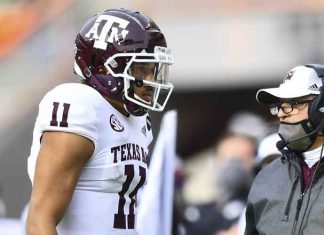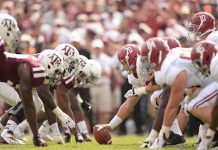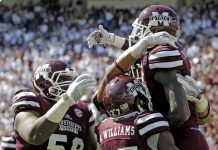Bill Mallory, who led Colorado to the Orange Bowl and became the winningest football coach in Indiana history, has died from a brain injury suffered in a recent fall. He was 82.
Indiana announced Mallory’s death on Friday, a day after his son, Indiana State coach Curt Mallory, posted on Twitter his father was in hospice care following emergency brain surgery earlier in the week. Curt Mallory said his father was injured in a fall on Tuesday.
Curt Mallory tweeted on Friday Bill Mallory ”passed away peacefully” earlier in the day, surround by extended family.
Bill Mallory went 69-77-3 and took Indiana to six bowls from 1984-96. Indiana has only played in 11 bowl games in its history. Mallory’s blunt assessments and earthy phrases made him a favorite around Bloomington, Indiana, where he was perfect complement to basketball coach Bob Knight.
In 1987, Mallory became the first to win the Big Ten’s coach of the year award in consecutive years. Mallory was 168-129-4 overall as a head coach with stops at Miami (Ohio), his alma mater, Colorado and Northern Illinois. At Colorado, Mallory’s team won a share of the Big Eight championship in 1976 and reached the Orange Bowl, where the Buffaloes lost Ohio State. But he was fired two seasons later after going 35-21-1 over five years.
Mallory played for Hall of Fame coach Ara Parseghian and worked under Woody Hayes at Miami.
He became a revered figure around Bloomington, where he continued to live and stay active with the program long after his firing in 1996.
Of course, it didn’t hurt to have the popular longtime basketball coach Bob Knight – a philosophical twin – on his side. While Knight often preached about academics and sticking to the rules, Mallory concurred and often talked about the need to find the right players.
”I was confident that Bill Mallory was a winner, and he`s proved it,” Knight told Indiana students during a 1986 football pep rally. ”He deserves your support, because we need coaches like him, willing to work hard and play by the rules.”
Mallory fulfilled and exceeded Knight’s expectations by turning a long languishing program into a respectable Big Ten team. The Hoosiers finished .500 or better seven times under Mallory, the most consistent period of success the Hoosiers had since the turn of the 20th century.
In 1987, Indiana celebrated a rare double – beating Ohio State for the first time since 1951 and beating Michigan for the first time since 1967.
When then Ohio State coach Earle Bruce dubbed the loss in Columbus the ”darkest day in Ohio State football since I have been associated with it (in 1949),” Mallory fired right back at his former colleague with the Buckeyes.
”You tell Earle I’ve had a couple of dark days, too, and I don’t want to hear that,” he said.
How did the former Woody Hayes assistant turn this program around?
With the same sort of run-first philosophy Hayes trademarked. It worked wonders. Running backs Anthony Thompson and Vaughn Dunbar emerged as Heisman Trophy candidates. Thompson was the 1989 runner-up; Dunbar finished sixth in balloting in 1991.
Still, the vastly improved Hoosiers never quite could reach the top of the Big Ten and instead wound up playing in second-tier bowl games while making semi-regular appearances in the Top 25.
Eventually fans expected more.
So when Mallory went 2-9 in 1995, followed that with a 3-8 mark in 1996 and lost 15 of 16 conference games over those two seasons, the school announced in late October it was making a change. Mallory finished the season by beating rival Purdue and receiving an emotional ride on the shoulders of his players with both arms raised.
Two of Mallory’s sons have returned to Indiana as assistant coaches. Curt Mallory worked for Gary DiNardo from 2002-04, and Doug Mallory worked for Kevin Wilson from 2011-13.
Curt Mallory is entering his first season at Indiana State, while Doug Mallory works for the Atlanta Falcons and Mike Mallory is with the Jacksonville Jaguars.
—
More AP college football: www.collegefootball.ap.org and https://twitter.com/AP-Top25
25% Bonus via Western Union

















